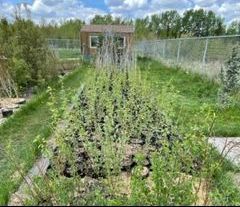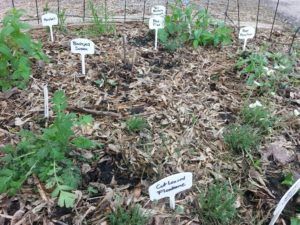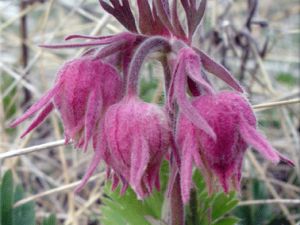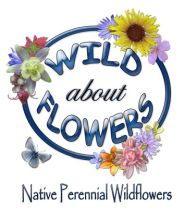Native Plants in Fish Creek Provincial Park
As the second largest urban park in Canada, Fish Creek Provincial Park extends 19kms from west to east, and covers a land base of 13km2. Here, we see a noticeable transition in plant communities, ranging from: white spruce forest (Picea glauca), primarily at the west end of the park; to grasslands, generally found on dry, south-facing slopes and wide areas of the river valley, primarily at the east end of the park; and parkland areas that are more moist than grasslands, and are often seen at the edge of floodplains and in ravines. We also have beautiful riparian habitat, made obvious by trees and shrubs that require more and regular access to water, including the many willow and sedge species you see along Fish Creek and the Bow river. Balsam poplar (Populus balsamifera) and aspen trees (Populus tremuloides) make up the beautiful forest canopy throughout the park, and we also see shrubs such as red-osier dogwood (Cornus sericea), wild rose (Rosa acicularis) and Saskatoon (Amelanchier alnifolia). And every spring, native wildflowers start to punctuate the landscape with their bold colours, including star-flowered Solomon’s seal (Maianthemum stellatum), twining honeysuckle (Lonicera dioica), Canada anemone (Anemone Canadensis), early blue violet (Viola adunca), and blue clematis (Clematis occidentalis), just to name a few!
What makes these native plant species important? In short, native plants are critically important to the overall ecological health of an area, as they provide essential resources such as food and shelter for the insects and wildlife that depend on them. In fact, since these species have co-evolved together over millennia, they truly need each other to thrive. When they do, we have healthy and highly biodiverse plant and wildlife communities; however, when these communities are infiltrated by invasive plants, the system becomes unbalanced, as the “weeds” begin to outcompete native plants for space, water and sunlight. In many areas of Fish Creek, this imbalance is quite obvious, and it may seem – at first glance – that the park is full of invasive weeds. However, if you look more closely, there is a lot of beautiful, native biodiversity to celebrate! In fact, there are several areas of intact native grasslands that show a healthy combination of native grasses, forbs (wildflowers) and shrubs, and which continue to persist, in spite of the encroaching weeds. So, we are making a new effort to bring attention to the happy story of native plants in Fish Creek, and ways that we can work together to preserve and protect them.
What We’re Doing
Community partnerships, as always, are helping us focus our efforts on a few important projects.
 Poplar Forest and Riparian Stewardship – Since 2014, we have worked closely with the Venturers Society, who has provided critical support to our riparian restoration projects by tending native trees and shrubs in their native plant nursery. By providing the physical nursery space and the people to tend the plants, the Venturers ensure we always have a source of locally adapted native vegetation on hand as needed for our stewardship efforts.
Poplar Forest and Riparian Stewardship – Since 2014, we have worked closely with the Venturers Society, who has provided critical support to our riparian restoration projects by tending native trees and shrubs in their native plant nursery. By providing the physical nursery space and the people to tend the plants, the Venturers ensure we always have a source of locally adapted native vegetation on hand as needed for our stewardship efforts.
 Native Plant Garden – In 2017, we worked with the Venturers to plant a native garden in front of our office, the Cookhouse, at the Bow Valley Ranch. This garden is tended by Friends’ volunteers, and is meant to show what can be accomplished by using native plants in home gardening. All native plants for this project were sourced from Wild About Flowers, who also provided important consultation services for this project.
Native Plant Garden – In 2017, we worked with the Venturers to plant a native garden in front of our office, the Cookhouse, at the Bow Valley Ranch. This garden is tended by Friends’ volunteers, and is meant to show what can be accomplished by using native plants in home gardening. All native plants for this project were sourced from Wild About Flowers, who also provided important consultation services for this project.
Community Weed Drive Pilot Project – Since Fish Creek is bordered by so many Calgary communities, seed and weed dispersal between them is inevitable. Many homeowners unknowingly plant beautiful but invasive plants in their home gardens, which can contribute to the ongoing weed problem in the park.
This year, we’ll be piloting our first ever Weed Drive on a very small scale. Up to 30 households in the communities of Sundance and Midnapore are invited to register to take part in this project, enabling them to swap out up to three invasive plants from their home gardens with the same number of native plants, provided by Wild About Flowers. This pilot project has been made possible through grant funds from the Alberta Native Plant Council and Alberta Environment and Parks. We hope it is a small step towards doing larger weed drives in the future.
The Weed Drive will take place on Tuesday, June 28. To find out more, and to register, visit Eventbrite. Registration closes June 25.
Once registered, you’ll receive more information on the project and important resources that will help you to identify if your garden plants are native or invasive, and how to choose native plants that will suit your garden conditions.
Friends of Fish Creek Native Plant Flickr Account – check out our Flickr account for photo images of native plants you can find in Fish Creek! We are currently working with volunteers to photo-document as many native plants in Fish Creek as we can; currently, you will see photos collected in 2013 as part of a research project comparing biodiversity in the wetlands vs grasslands in Lafarge Meadows following its restoration from a former gravel pit to wetland landscape.
How You Can Help
 Plant Native Plants In Your Home Garden
Plant Native Plants In Your Home Garden
There are many benefits associated with gardening with native plants, because they are adapted to the local climate, soil types and wildlife with which they have co-evolved:
- Less water – Once established, native plants are hardier than exotic plants, and need little additional water beyond normal rainfall;
- Less maintenance and chemicals – Native plants have their own defense mechanisms against diseases and pests, meaning you won’t need much – if any – chemical pesticides;
- More insects, happy wildlife! – Native plants encourage visits from beneficial insects, birds and pollinators, and also help to connect these critters to other, healthy plant communities.
Of course, like all plants, native plants have particular environmental conditions (ie soil, sun/shade, moisture) that they require. To learn more about native plants that might be suitable for your home garden, visit the “Plants and Seeds” section of the Wild About Flowers website, and click on any plant you would like to know more about! For each plant, you will see information on the light, soil and chinook exposure conditions they need, in addition to features such as bloom period, attractiveness to pollinators or whether they are edible, poisonous or have medicinal properties.
Grow Wild YYC also has an abundance of information and resources available to help you learn about gardening with native plants.
Create a MyImpactPage volunteer account and become one of our Weed Watchers! You’ll learn how to identify, map and remove invasive plants in Fish Creek, and by doing so, will help us protect the few remaining intact native grassland patches in the park. Visit our Environmental Stewardship volunteer page to find out more.
Learn With Us!
Take advantage of the many resources that exist to help you learn and identify native and invasive plants, and consider using only native plants in your home gardens.
- Alberta Native Plant Council
- Alberta Invasive Species Council
- Wild About Flowers
- Grow Wild YYC
- Wright Nursery
- ALCLA Native Plants
- Insects of Alberta
- Alberta Native Bee Council
- Apps:
- Alberta Wildflowers
- iNaturalist
For more information about any of these projects, contact Emma Stroud, Citizen Science & Stewardship Coordinator, at emma@friendsoffishcreek.org.
Top: Early Blue Violet, Twinning-Honeysuckle, Brown Eyed Susan. Photos courtesy of Wild About Flowers.
Venturers’ native plant nursery – Rachel Ryan; Cookhouse native plant garden – the Friends; Three flowered avens (Geum triflorum) – Wild About Flowers; Volunteer Weed Watcher – the Friends.



